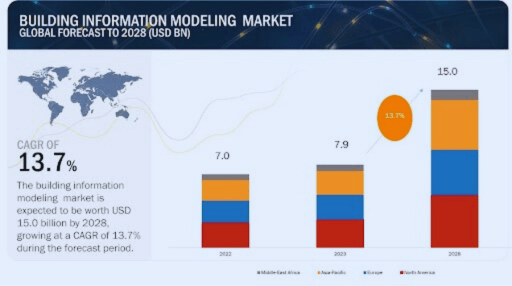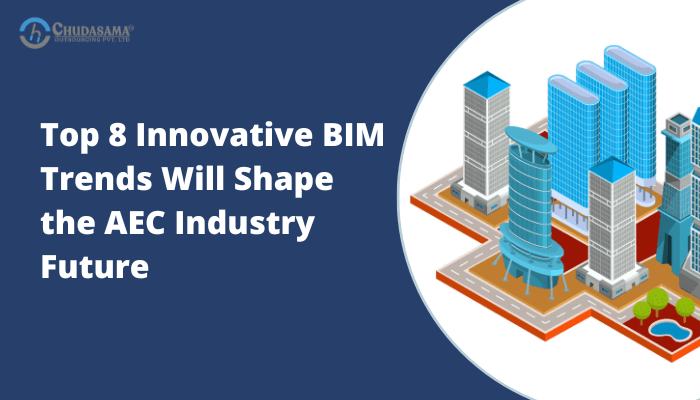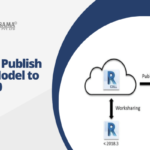Architecture and building enthusiasts! Let’s explore a topic that is transforming how we build the world: Building Information Modelling
(BIM) Building Information Modelling You’re in luck if you want to know what the future holds for BIM. We will explore the latest features and trends that are making waves within the AEC industry (Architecture, Engineering, and Construction).
Indeed, in the past people used pen and paper when constructing. On the other hand, in the course of its development and progressively with newer inventions, BIM replaced the traditional building design system comprising pen and paper. Over the years, BIM technology has transformed the AEC industry into more efficient, accurate, and easy ways of working.
Improvement of the project’s performance and optimal building up are the main objectives when employing BIM services in the highest degree of precision. Besides, it also allows AEC professionals to work together and communicate effectively. As a matter of fact, statica the BIM market is worth USD 7.9B and is estimated to grow at USD 15.0B with a CAGR of 13.7%.

BIM modeling services have gained prominence as a major technology used in AEC due to an expanding market size. It involves the simplification of the complex construction process is one way towards a more sustainable future for the AEC industry with BIM Services. Through BIM, waste is avoided during construction and every collaborator makes optimum use of available resources.
Nevertheless, where are we headed in the context of construction? What is building information modeling and how it will impact the construction industry?
Let us, therefore, briefly discuss the most innovative bim trends set to affect architecture space.
Latest Trends Shaping the Future of Building Information Modeling
Let’s examine the innovative BIM trends that will impact the architecture industry to answer these questions.
Prefabrication of Modular Designs
Prefabrication, the first stage in modular assembly begins with the design of the building elements and their fabrication off-site at a workshop or factory. BIM services have been at the core of many modular assembly advances. Prefabrication is the process of creating building components off-site, in a workshop or factory. Prefabrication, modular construction, and other methods of prefabrication have become more popular in recent years to help address concerns about safety and productivity. Prefabrication involves the fabrication of customized building components off-site. Modular construction is standardized construction such as a toilet or dorm.
BIM Model Sharing in the Cloud
Cloud-BIM, or BIM model share on the Cloud, is a new technology in BIM to combat its stand-alone nature. BIM in the Cloud allows for anyone to have access to project information from any location, at any time. B. Autodesk’s construction management software, BIM 360 allows architects, project stakeholders, and engineers to collaborate online in a central workspace. Cloud BIM allows for better communication and collaboration between project team members.
3D Printing Technology
3D printers in the AEC sector are used to produce a 3D model or prototype for construction components. 3D-printed houses are cheaper than traditional buildings because they use fewer materials.
Digital Twin Technology
The digital twin technology entails a duplication of a virtual image out of a physical object through which monitoring and analysis are done in real-time. The digital twin of a building is generated using BIM data where the performances of the building can be observed through its lifespan. This trend supports predictive maintenance, sustainability initiatives, and continuous improvement.
Internet of Things (IoT)
Internet of Things (IoT) is a technology that embeds sensors in objects or machines to monitor their operating status. IoT devices help in real-time data retrieval and their integration into BIM opens a wide range of applications to improve operational and construction efficiency. With its updated data flows and the usage of cloud technologies such as ABB Switch Range Configurator and Rexel Wholesale Connector and IoT sensor network integration, BIM model integration speeds up the designing process. IoT technology is also used to improve and facilitate facilities management, logistics, prefabrication, and health and safety management.
Virtual reality (VR) and augmented reality (AR)
Construction is a major user of augmented reality (AR) or virtual reality (VR). AR places 3D designs or models in the real world using mobile devices and 3D models. VR is a virtual version of the real world. These cutting-edge technologies allow for the creation and display of a 3D Revit Model in architectural and building floor plans. Correct presentation of BIM data helps in space planning, design analyses for clash detection, whether it is between MEP sections or other aspects, fluid communication between design and construction teams, reducing frequent change orders, as well as prefabrication.
Laser Scanning
In the construction industry, 3D scanners are used to perform various retrofitting, conversion, and rehabilitation projects. Scan to BIM converts laser-scanned data into a 3-dimensional model by converting it from a point cloud of scanned data. In various industries, 3D laser scanners are used, such as archaeology and civil engineering. 3D laser scans have a wide range of applications. Laser scanning can be used for a variety of applications, including 3D tunnels, bridges, and facade architecture measurements. It is also ideal for archaeological documentation, piping modeling, volume measurements, and other uses.
Green Buildings
The energy modeling or analysis is a virtual simulation based on a number of criteria, such as the energy consumption and interior quality of a building, the utility bills, CO2 emissions annually, and projected costs for electrical equipment for air conditioning, heating, lighting, etc. The analysis also includes examining and comparing green energy sources, such as photovoltaics and solar panels. The post-load design energy model determines how much cooling or heating is required by a system and its structure.
How Can Chudasama Outsourcing Help You Stay Ahead With BIM Trends?
Chudasama Outsourcing is a reputable Architectural BIM company that specializes in delivering top-notch high-quality solutions to clients. At Chudasama Outsourcing, we 3D Revit Modeling and BIM to industry-standard quality protocols during the BIM Modeling process to guarantee superior performance and excellence in our solutions. Our portfolio includes a diverse range of successful projects for leading organizations worldwide.
So what are you waiting for? If you have an upcoming BIM Modeling project, contact our team of experts for a consultation.
Conclusion
With the increasing acceptance of digital transformations in the AEC industry, embracing the new trends in BIM will be critical for businesses to remain competitive while still delivering successful projects. Including cloud collaboration and artificial intelligence, these trends will revolutionize the construction industry, introducing new levels of efficiencies, sustainability as well as cooperation. However, if these trends are not adopted by professionals in the AEC space, future-proofing of projects and transformation of the industry will be stalled.




